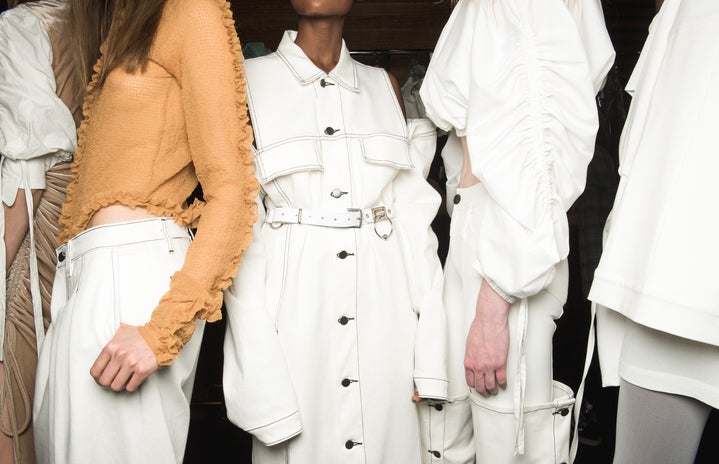Last year we saw the commute of fashion week, and I’m not talking about the models. 2020 fashion fell short of our expectations as fashion houses took a feeble step down when confronted by the pandemic. Characterized by exclusive guest lists, premium NFT’s, and escapism motifs, A/W 20 lacked the grandiose catwalk that was expected. Yet this year guided us back to our silver lining and away from the sleepover screenings. Moschino abandoned their impromptu marionettes and Chanel fled from their chateaux in hopes of pursuing a sense of normalcy. The return to an immersive traditional experience catalyzed front row gossip and left buyers greedy with purchase orders.
However, new beginnings bring new challenges. A year of silence meant a flamboyant return and thus high expectations from consumers. To satisfy such pent up demands, fashion brands have been pressured to pursue collections that can compete in such cut- throat environments, each left to define their own competitive advantages.
When faced with the pandemic, Saint Laurent was one of the first luxury brands to abandon the official calendar and bring a halt to the artistic tumult. Their unprecedented expertise however was of the first to grace the catwalk this season, returning their archetypal tailoring to the Trocadero, where the show was held. Embracing their core collection through their audacious elegance, this fashion house didn’t stray far from its principals. Models poised within sturdy blazers and chiffon blouses to follow became the standard script. And of course the glimmering Eiffel tower backdrop… Consumers were once again reminded of such parisian novelty, a way of regaining power over the world of pixels. Luxury brand Dior also raided their haute couture archives in hopes of evoking the consumer’s inner sartorialist. As a student of sustainable development, this is definitely something that resonated well with me.
However, the past year also revealed the importance of conscious consumerism, backing fashion houses into a familiar pre-visited corner. What may have seemed like an inhibition to innovation for some led to creative epiphanies for others. Creative director at Chloe was one step ahead. Collaborating with non- profits to upcycle garments, the runway became a symbiosis of beauty and purpose. Shearling coats and satin pleats were enough to resonate with Gen- Z’s environmental footprint. Marine Serre followed suit with her own celestial creations, regeneration and repurposing being her newfound aesthetic.
However, a new dichotomy now surrounds fashion week. With luxury brands clinging onto their heritage, up and coming labels have taken a huge controversial leap into the world of tech. Auroboros, a London based fashion brand, is one example. Fashion week granted them access to premiere an entirely digital collection, feeding the tech hungry customers left unsatisfied by such orthodox designers. Their debut formed the conventions of a hyperreality, built from a marriage of nature and tech, which has since been replicated. Perhaps this is the change needed to disrupt the routines that covid deemed inescapable.
The legacy of fashion week continues to thrive, with each fashion house offering unique contributions. The awaited element of storytelling remains intact through empire waists and an obnoxious amount of tweed. However, an era of tech that remains rough around the edges is challenging this, with fanciful silhouettes and starry-eyed investors. I guess we will have to see how Anna Wintour feels about this change.


